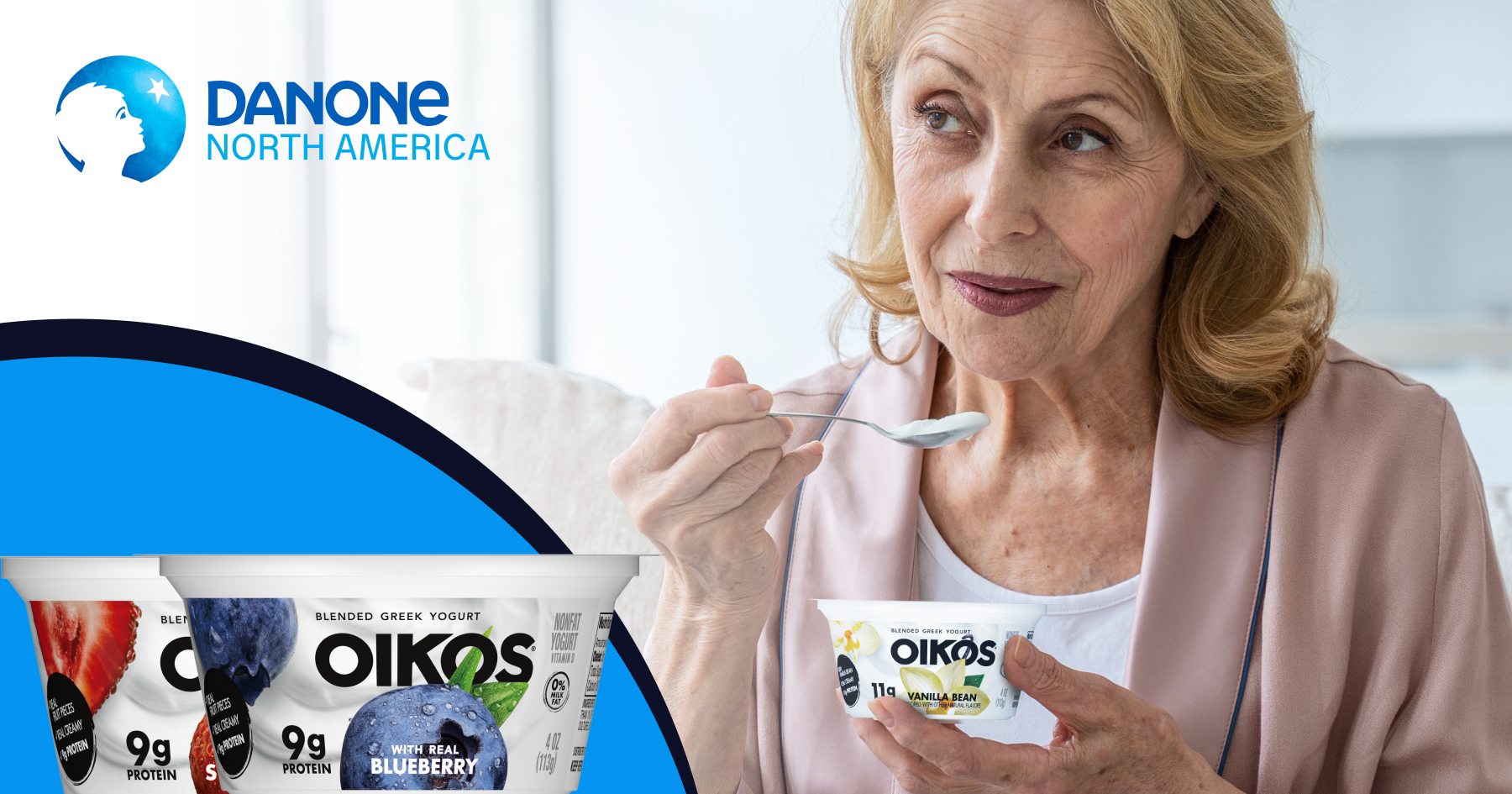Dysphagia – difficulty swallowing – is a condition that affects people of all ages but is particularly prominent in older adults. Research in the Journal of the American Geriatrics Society estimates that 50–70% of residents in nursing homes and assisted living facilities experience dysphagia, underscoring the urgency of developing effective management strategies.
In senior living communities, the consequences of dysphagia go beyond mere difficulty swallowing. They include serious health risks such as aspiration pneumonia, malnutrition, dehydration, and a diminished quality of life. Elderly individuals with dysphagia may also encounter psychological and social difficulties, as they may shy away from communal dining out of fear or embarrassment. As a result, mealtimes – ordinarily a chance for fellowship and enjoyment – can become stressful and isolating. However, with thoughtful dietary choices and proper care, these obstacles can be managed, and mealtime can be transformed into a moment of nourishment and dignity.
Understanding Dysphagia in the Senior Population
Swallowing is a remarkably intricate process, involving the coordination of over 50 muscles and six cranial nerves. Each phase—from the oral to the esophageal stage—relies on precise timing and strength to move food safely from the mouth into the stomach. Dysphagia arises when one or more components of this delicate mechanism fail, often due to age-related muscle decline, neurological disorders (such as stroke or Parkinson’s disease), or chronic illnesses.
One of the most significant health risks posed by dysphagia is aspiration pneumonia. This infection occurs when small amounts of food or liquid enter the airway and reach the lungs instead of proceeding down the esophagus. The danger is particularly acute in older adults, whose immune systems may already be compromised. Accordingly, multiple sources, including Dysphagia in the Elderly and Preventing Aspiration in Older Adults with Dysphagia, emphasize that preventative measures like texture-modified diets, proper feeding techniques, and careful supervision are key to reducing pneumonia risk.
Moreover, the emotional repercussions of dysphagia should not be overlooked. The fear of choking can lead seniors to limit their food and fluid intake or to isolate themselves from community activities. This hesitation or withdrawal can spawn feelings of loneliness and negatively impact mental well-being. Effective dysphagia management, therefore, must account for both clinical safety and the psychosocial dimensions that influence a senior’s overall health.
Yogurt: A Versatile, Nutrient-Dense Ally
In searching for solutions that can meet the multifaceted needs of seniors with dysphagia, yogurt emerges as a highly appealing option. Its smooth, creamy texture, nutrient density, and broad culinary applications make it a flexible addition to a range of diets. Below are some of the key reasons why yogurt stands out:
- Ideal Texture and Adaptability
By virtue of its smooth consistency, yogurt fits easily into diets classified under the International Dysphagia Diet Standardization Initiative (IDDSI). Foods aligned with these guidelines minimize the risk of choking and aspiration. Yogurt is also highly adaptable: if a resident requires a thicker or thinner consistency, a variety of thickening agents can be added to adjust to the precise needs of the individual. - Robust Nutritional Profile
Yogurt offers a wealth of nutrients critical for seniors. Its high protein content supports muscle maintenance and recovery, while its calcium and vitamin D contribute to bone health—a serious concern in older populations susceptible to osteoporosis. Additionally, yogurt often contains probiotics that promote a healthy gut microbiome, which can aid digestion and nutrient absorption in individuals who may already struggle with reduced appetite or other gastrointestinal challenges. - Convenience and Extended Shelf Life
For caregivers and culinary teams operating in large facilities, yogurt’s comparatively long shelf life and ease of storage can be significant advantages. Having a reliable, nutritious staple on hand simplifies menu planning and ensures residents always have access to a safe and nutrient-rich option. - Comfort and Familiarity
Perhaps one of the most overlooked advantages of yogurt is its widespread acceptance. Many older adults grew up eating yogurt as part of breakfasts, snacks, or desserts, making it a familiar and comforting food. This familiarity can help reduce mealtime anxiety and encourage a more positive relationship with food, despite the challenges of dysphagia.
The Current State of Research: Potential Links to Respiratory Health

Although no studies have directly investigated whether yogurt consumption can reduce pneumonia risk in seniors with dysphagia, related research provides insights into how yogurt might indirectly support respiratory health:
- Yogurt and Respiratory Infections
A study by Makino et al. found that daily yogurt consumption with live cultures increased resistance to common respiratory infections, such as colds, in elderly individuals. While the study did not specifically address aspiration pneumonia, its findings suggest that probiotics in yogurt could offer immune-boosting benefits that fortify seniors against some types of respiratory infections. - Dysphagia and Aspiration Pneumonia
Numerous studies underscore the increased risk of aspiration pneumonia in individuals with dysphagia, particularly among the elderly (Source, Source, Source). Preventing aspiration through careful attention to food texture, feeding techniques, and resident-specific swallowing guidelines is the primary strategy to minimize the risk. Because yogurt can be texture-modified and is naturally spoon-thick, it aligns well with these preventive tactics. - Probiotics and Immunity
Probiotics found in yogurt may bolster gut and systemic immunity (Source). This support could theoretically lower infection risks, although targeted research is needed to confirm whether probiotics can directly impact the risk of aspiration pneumonia in seniors with dysphagia. Nonetheless, improving overall immune function is generally beneficial for vulnerable populations.
Taken together, these findings paint a promising picture of yogurt’s potential ancillary benefits. However, further studies are necessary to determine whether the probiotic properties of yogurt can specifically help mitigate pneumonia risk in seniors who struggle with dysphagia. Until such research becomes available, yogurt remains a well-rounded, safe option—albeit without definitive proof of direct protection against pneumonia.
Practical Applications: Integrating Yogurt into Senior Living Menus
Smoothie Bowls and Spoonable Smoothies
One of the simplest yet most appealing ways to incorporate yogurt is through smoothies or smoothie bowls. Blend yogurt with soft fruits like bananas, strawberries, or peaches. For an added nutritional boost, consider mixing in nut butter or protein powder. If necessary, use a thickening agent to ensure the consistency meets IDDSI standards.
Creamy Soups and Sauces
Plain yogurt can be a healthy and appealing alternative to heavy cream in soups. Puree roasted vegetables—such as squash, carrots, or tomatoes—and stir in yogurt for added creaminess and a tangy flavor. This approach not only enhances nutritional value but also meets the textural requirements for individuals with mild to moderate dysphagia.
Flavorful Dips and Spreads
The social aspect of dipping can remain intact for seniors with dysphagia if soft-textured dippers are used. Create yogurt-based dips by combining plain yogurt with pureed vegetables, herbs, or mild spices. Options like cucumber-dill or roasted-garlic yogurt dips can be both nourishing and tasty.
Nutrient-Dense Desserts
Dessert options that are both safe and satisfying can be a game-changer for seniors who may otherwise feel deprived. Yogurt parfaits, layered with fruit purees, honey, or even a sprinkle of cinnamon, offer a sweet treat that still fits dysphagia-friendly criteria. This variety can make mealtimes feel festive and less restrictive.
Emotional and Social Dimensions of Dysphagia Care

Addressing dysphagia effectively entails more than preventing choking and pneumonia; it also involves safeguarding the emotional well-being of seniors. Many older adults derive joy and a sense of belonging from shared meals, a cornerstone of communal life in senior living facilities. By offering safe and appetizing dishes—like yogurt-based meals—caregivers can help restore the pleasure of eating and reduce the fear or embarrassment that often accompanies dysphagia.
Promoting social engagement at mealtimes could involve grouping residents with similar dietary needs or organizing taste tests of new yogurt-based recipes. Such activities encourage conversation and help residents feel more empowered about their food choices. Moreover, praising residents for following safe swallowing techniques or demonstrating improvements in their dining comfort can further boost self-esteem.
Leveraging Resources and Tools for Effective Management
Modern dysphagia management has benefited from a broad range of resources designed to guide caregivers and culinary teams. For instance, Danone’s Dysphagia Tool offers evidence-based strategies for creating safe and appealing menus. Similarly, references like Dysphagia Nutrition Guideline by Alberta Health Services outline best practices in food preparation and texture modification.
Equipping staff with proper knowledge—whether it’s recognizing early signs of dysphagia or understanding the varying IDDSI thickness levels—can significantly improve resident outcomes. Collaboration among dietitians, speech-language pathologists, and occupational therapists helps ensure each resident’s unique needs are met. Together, these professionals can fine-tune menus, monitor swallowing progress, and adapt mealtime protocols as required.
Tips for Caregivers and Culinary Teams
- Keep Up with IDDSI Guidelines
Conduct ongoing training to ensure that caregivers and kitchen staff remain current with IDDSI classifications. This helps maintain a high level of safety and consistency in meal preparation. - Personalize Food Choices
Whenever possible, invite residents to participate in menu planning by sharing flavor preferences or dietary needs. Personalization fosters a sense of control and autonomy. - Utilize Attractive Presentation
Even texture-modified foods can be visually appealing. Serving yogurt-based dishes in small glasses, ramekins, or garnishing them with colorful fruit purees can spark interest and enhance mealtime satisfaction. - Foster a Calm Dining Environment
Reduce noise levels, ensure comfortable seating, and encourage a relaxed pace of eating. This approach can alleviate anxiety and encourage seniors to enjoy their meals. - Document and Communicate
Keeping clear records of residents’ swallowing assessments, mealtime behaviors, and any observed difficulties aids in timely adjustments to care plans. It also helps new staff or substitute caregivers remain aligned with individual needs.
Safeguarding Dignity Through Adequate Nutrition
At its core, dysphagia management focuses on more than just mitigating health risks like aspiration pneumonia. It is about safeguarding dignity, preserving the joy of eating, and ensuring seniors feel supported and nurtured at one of the most fundamental daily rituals: mealtime.
By incorporating yogurt—a food that is simultaneously safe, nourishing, and widely accepted—senior living communities can empower residents to maintain a sense of normalcy and enjoyment when dining. Whether served as part of a hearty breakfast, a refreshing afternoon snack, or a comforting dessert, yogurt can help restore the pleasures of mealtime that dysphagia might otherwise diminish.
Though more research is needed to clarify yogurt’s specific impact on pneumonia risk in seniors with dysphagia, current findings on its probiotic benefits suggest a broader potential for immune support and respiratory health. Until those connections are definitively established, the practical and nutritional merits of yogurt alone make it a valuable ally in dysphagia-friendly dining.

Dysphagia remains a significant concern in senior living communities, with implications ranging from physical health risks, like aspiration pneumonia, to emotional challenges that erode quality of life. Yogurt, with its creamy consistency, adaptability to IDDSI guidelines, and robust nutritional profile, stands out as an exceptionally useful component of a dysphagia management plan.
While clinical studies have yet to confirm whether yogurt consumption can directly reduce pneumonia in seniors with swallowing difficulties, its probiotic properties and demonstrated immune-boosting potential suggest that yogurt could play a meaningful, if indirect, role in safeguarding respiratory health. Combined with best practices in dysphagia care—such as texture modification, adequate hydration, and social support—yogurt can be part of a broader strategy that makes mealtimes safe, joyful, and dignified.
By prioritizing both the medical and emotional dimensions of dysphagia, senior living communities can reclaim the shared dining experience as a source of comfort and community. Yogurt may be only one piece of the puzzle, but it is a versatile, accessible, and comforting piece that can make a substantial difference in the daily lives of older adults facing swallowing challenges.


